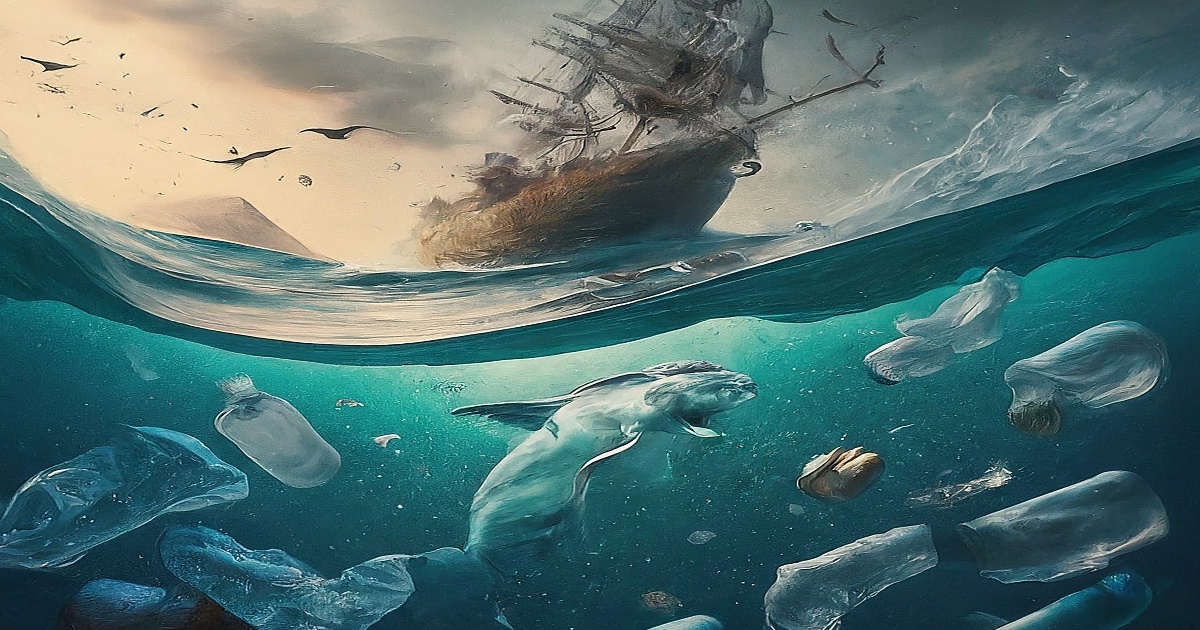Every year, the oceans are engulfed by an estimated 1.15 to 2.41 trillion tonnes of plastic waste, significantly affecting at least 267 species across the globe. This pollution particularly affects 44% of seabird species, 43% of marine mammals, and a staggering 86% of sea turtles, leading to dire consequences such as ingestion, starvation, drowning, and entanglement.
Much of the plastic materials are less dense than water, making them highly resilient and able to float, which enables them to travel long distances. This has resulted in the emergence of a massive area in the Pacific Ocean known as the Great Pacific Garbage Patch (GPGP), which is comprised of around 1.8 trillion plastic pieces. The GPGP spans an area of nearly 618,000 square miles, making it three times larger than France and twice the size of Texas, with a weight comparable to over 740 Boeing 777 airplanes.
Positioned midway between California and Hawaii, the GPGP represents the largest of five global offshore regions where plastic accumulates. Scientists have utilized a sophisticated sampling method, involving a fleet of 30 vessels, 652 surface nets, and aerial imagery to estimate the patch's size. While current estimates suggest there are 1.8 trillion plastic pieces in this area, research indicates the actual figure could be as high as 3.6 trillion, with some pieces dating back over 50 years and including various items like lighters, toothbrushes, water bottles, and even smartphones.
Moreover, the patch is reportedly expanding rapidly, with research indicating a tenfold increase in size every decade since 1945. Once plastic infiltrates the marine food chain, there is a concerning risk of it also entering the human food chain through bioaccumulation, where toxins accumulated in marine animals are transferred to predators. The economic implications of marine plastic pollution are estimated between $6 to 19 billion annually, factoring in costs associated with tourism, fisheries, aquaculture, and clean-up efforts.
As more plastic is carelessly discarded, microplastics will likely proliferate within the patch. To combat this issue, The Ocean Cleanup project aims to eliminate half of the plastic pollution by 2027 through the use of floating barriers anchored to the ocean floor. A similar phenomenon exists in the Atlantic Ocean, known as the North Atlantic garbage patch, which was first noted in 1972 and continues to contribute to environmental hazards. Despite some initiatives like those by UNESCO and The Ocean Cleanup, the majority of attention and resources have been concentrated on addressing the challenges posed by the Great Pacific Garbage Patch.







5 Comments
Comandante
This is a powerful reminder of the devastating impact of plastic pollution on our oceans. We need to act now to protect marine life and ecosystems.
Muchacha
The facts and figures presented in this article are alarming. We can't ignore the plastic problem any longer.
Habibi
It's important to raise awareness about the GPGP, even if it's a difficult topic. We need to understand the scope of the problem to find solutions.
ZmeeLove
We need to educate ourselves and others about the issue of plastic pollution. The more informed we are, the more effectively we can advocate for change.
Muchacha
I'm tired of hearing about the GPGP. It's depressing and makes me feel helpless. We need to focus on individual actions we can take to reduce our plastic footprint.